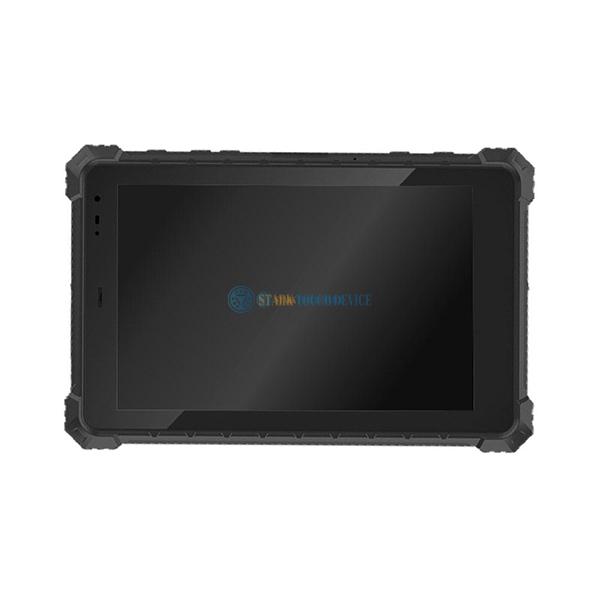Welcome STARK TOUCH DEVICE!
Solutions
Hard disk partition management skills for industrial control computers
Industrial Control Computer Hard Disk Partition Management Techniques
In industrial automation environments, efficient hard disk partition management is critical for maintaining system stability, optimizing performance, and ensuring data security. Proper partitioning reduces disk fragmentation, minimizes read/write conflicts, and enhances fault recovery capabilities. Below are practical techniques for managing partitions in industrial control computers.

Partitioning Strategy for Performance Optimization
1.1 Separate System, Application, and Data Partitions
Allocating dedicated partitions for the operating system, industrial control applications, and data storage prevents performance degradation caused by cross-partition conflicts. For example, placing the OS on a solid-state drive (SSD) partition and application logs on a separate mechanical hard drive (HDD) partition reduces I/O bottlenecks. Studies show this configuration can improve system responsiveness by up to 30% in multi-tasking scenarios.
1.2 Logical Volume Management for Scalability
Using Logical Volume Manager (LVM) or similar technologies allows dynamic resizing of partitions without data loss. This is particularly useful for industrial systems requiring frequent storage adjustments, such as data acquisition systems that accumulate logs over time. By reserving unallocated space during initial setup, administrators can expand partitions as needed, avoiding costly hardware upgrades.
1.3 SSD-HDD Hybrid Configuration
Deploying SSDs for system and application partitions while using HDDs for long-term data storage balances cost and performance. SSDs provide faster boot times and application loading, while HDDs offer cost-effective bulk storage. This setup is ideal for industrial PCs handling real-time control tasks alongside historical data analysis.
Data Security and Recovery Enhancements
2.1 Isolated Critical Data Partitions
Storing configuration files, control algorithms, and sensor data in dedicated partitions protects them from system crashes or malware. For instance, a separate partition for PLC configuration files ensures quick recovery during OS reinstallation, minimizing production downtime.
2.2 Regular Backup of Partition Images
Creating periodic disk images of system and application partitions enables rapid recovery after failures. Tools like differential backups reduce storage overhead by only saving changed data. In a manufacturing case study, this approach cut recovery time from 4 hours to 45 minutes after a ransomware attack.
2.3 Read-Only Partitions for Static Content
Marking partitions containing firmware updates or calibration data as read-only prevents accidental modifications. This is crucial for compliance with industry standards like ISO 26262 in automotive control systems, where unauthorized changes could lead to safety violations.
Fault Diagnosis and Maintenance Efficiency
3.1 Dedicated Diagnostic Partitions
Allocating a small partition for system logs and diagnostic tools simplifies troubleshooting. Technicians can boot from this partition to run hardware tests or analyze crash dumps without interfering with the main OS. A chemical plant implemented this strategy and reduced mean-time-to-repair (MTTR) by 25%.
3.2 Partition Alignment for SSD Optimization
Ensuring partition boundaries align with SSD erase block sizes (typically 4KB) prevents write amplification and extends drive lifespan. Misaligned partitions can increase wear by 3-5x, according to benchmark tests. Most modern partitioning tools handle alignment automatically, but manual verification is recommended for critical systems.
3.3 Monitoring Partition Health
Implementing SMART (Self-Monitoring, Analysis, and Reporting Technology) checks for HDD partitions and wear-leveling metrics for SSDs provides early warning of failures. An energy company deployed partition health monitoring across 500 industrial PCs, reducing unplanned downtime by 18% through proactive drive replacements.
Implementation Best Practices
4.1 Initial Partition Size Planning
System Partition: Allocate 100-200GB for OS and core applications, leaving 20% free space for updates.
Application Partition: Size based on software requirements plus 30% growth margin.
Data Partition: Use remaining space, implementing LVM for future expansion.
4.2 File System Selection
NTFS: Preferred for Windows-based industrial PCs due to support for large files (>4GB) and access control lists (ACLs).
ext4: Recommended for Linux-based controllers offering journaling and improved crash recovery.
4.3 Avoiding Common Pitfalls
Over-Partitioning: Limit to 3-4 partitions to reduce management complexity.
Ignoring Fragmentation: Schedule weekly defragmentation for HDD partitions (not required for SSDs).
Neglecting Backups: Implement 3-2-1 rule (3 copies, 2 media types, 1 offsite).
By adopting these techniques, industrial control systems achieve better performance, reliability, and maintainability. A well-planned partition strategy not only optimizes current operations but also provides flexibility for future technological upgrades.


